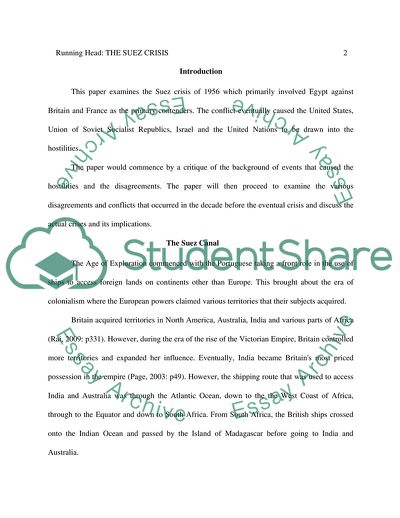Cite this document
(Disagreements and Conflicts in the Suez Canals Essay Example | Topics and Well Written Essays - 2750 words, n.d.)
Disagreements and Conflicts in the Suez Canals Essay Example | Topics and Well Written Essays - 2750 words. https://studentshare.org/history/1795785-discuss-the-suez-crisis
Disagreements and Conflicts in the Suez Canals Essay Example | Topics and Well Written Essays - 2750 words. https://studentshare.org/history/1795785-discuss-the-suez-crisis
(Disagreements and Conflicts in the Suez Canals Essay Example | Topics and Well Written Essays - 2750 Words)
Disagreements and Conflicts in the Suez Canals Essay Example | Topics and Well Written Essays - 2750 Words. https://studentshare.org/history/1795785-discuss-the-suez-crisis.
Disagreements and Conflicts in the Suez Canals Essay Example | Topics and Well Written Essays - 2750 Words. https://studentshare.org/history/1795785-discuss-the-suez-crisis.
“Disagreements and Conflicts in the Suez Canals Essay Example | Topics and Well Written Essays - 2750 Words”. https://studentshare.org/history/1795785-discuss-the-suez-crisis.


